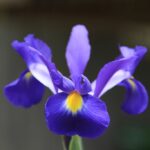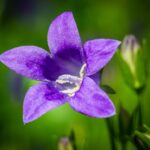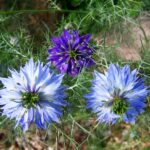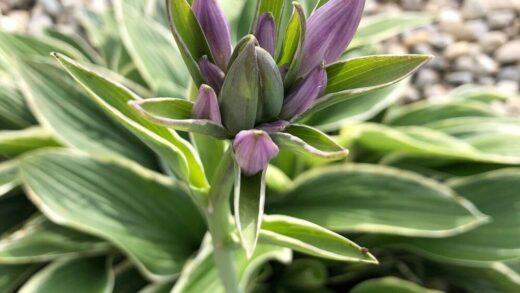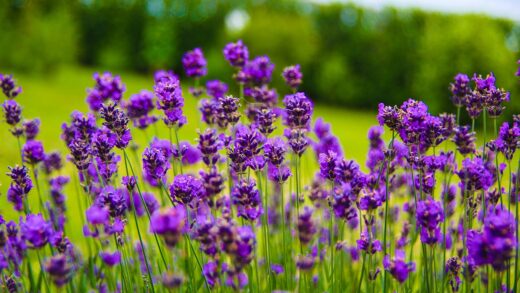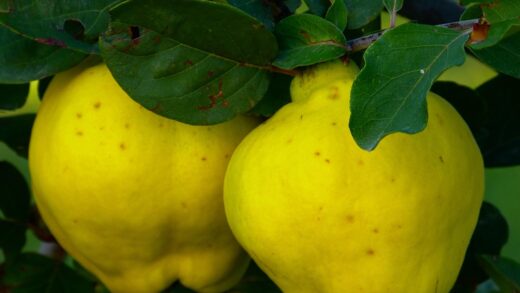Providing the appropriate nutrition for the dwarf iris is a delicate balance, as these hardy perennials are adapted to thrive in soils that are not overly rich. Unlike many other garden flowers that demand heavy feeding, the dwarf iris performs best with a more restrained approach to fertilization. An excess of nutrients, especially nitrogen, can lead to a host of problems, including lush but weak foliage, a lack of flowers, and an increased susceptibility to fungal diseases and rhizome rot. Therefore, the primary goal is to supply just enough essential nutrients to support healthy growth and prolific blooming without overstimulating the plant.
The foundation of a good nutrient management plan for dwarf irises lies not in frequent applications of fertilizer, but in the initial preparation of the soil. Before planting, incorporating a generous amount of well-rotted compost or other organic matter into the garden bed creates a healthy, living soil. This organic material improves soil structure and drainage while providing a slow, steady release of a wide range of essential nutrients and micronutrients over a long period. For many established iris clumps in reasonably fertile soil, this initial soil enrichment, topped up with an annual mulch of compost, may be all the feeding they ever require.
Dwarf irises have specific needs when it comes to the major plant nutrients: nitrogen (N), phosphorus (P), and potassium (K). They are considered light feeders and are particularly sensitive to high levels of nitrogen. Excessive nitrogen encourages the plant to produce an abundance of soft, leafy growth at the expense of flowers and strong rhizome development. In contrast, phosphorus is vital for the development of a robust root system and for the initiation of flower buds. Potassium plays a crucial role in the overall health and vigor of the plant, helping to regulate water movement and improve its resistance to disease and stress.
Given these specific requirements, if you choose to use a commercial fertilizer, it is imperative to select the right kind. A balanced fertilizer with a high nitrogen content, such as a typical lawn fertilizer, would be disastrous for irises. Instead, you should opt for a fertilizer that is specifically formulated for bulbs or flowering perennials, which will have a lower nitrogen number and higher phosphorus and potassium numbers. Formulations with an N-P-K ratio like 5-10-10 or 3-5-3 are much more suitable for promoting the desired balance of healthy growth and abundant blooms.
Organic alternatives are often the best choice for fertilizing dwarf irises, as they release their nutrients slowly and are less likely to burn the plant or cause a sudden surge in growth. Bone meal is an excellent organic source of phosphorus and calcium, and it is a traditional and highly effective amendment for irises. Wood ash can also be beneficial in small quantities, as it provides potassium and helps to raise the soil pH, creating the slightly alkaline conditions that irises prefer. However, it should be used with caution and only after a soil test confirms that your soil is acidic.
More articles on this topic
The best time to fertilize
Timing is a critical element in any effective fertilization strategy for dwarf irises. The plant’s ability to absorb and utilize nutrients is directly linked to its growth cycle, and applying fertilizer at the wrong time can be ineffective at best and harmful at worst. The single most effective time to fertilize is in the early spring, just as the new, spear-like leaves are beginning to emerge from the ground. At this stage, the plant is entering its most active period of growth and requires available nutrients to fuel the development of foliage and, most importantly, flowers.
Applying fertilizer in early spring ensures that the nutrients are present in the soil and ready for uptake by the plant’s developing root system. This well-timed feeding provides the necessary resources for the plant to produce the largest, most vibrant blooms possible. It also supports the growth of healthy foliage, which is essential for photosynthesis. The energy generated by the leaves after flowering is what replenishes the rhizome and fuels the development of the buds for the following year’s display.
Conversely, you should strictly avoid fertilizing your irises late in the growing season, particularly in the late summer or autumn. An application of fertilizer at this time can stimulate a flush of new, tender growth. This late growth will not have sufficient time to harden off and mature before the first frosts of winter arrive. As a result, it is highly susceptible to frost damage, which can weaken the entire plant and create entry points for diseases, compromising its ability to survive the winter and thrive the following spring.
If your soil is particularly poor or sandy, you may consider a second, very light application of fertilizer immediately after the flowering period has finished. This can help the plant to replenish the energy it expended on blooming and to build up its reserves in the rhizome. However, for most garden soils, a single application in early spring is perfectly adequate. Over-fertilizing is a far greater risk to the health of dwarf irises than under-fertilizing, so it is always best to err on the side of caution.
More articles on this topic
Choosing the right type of fertilizer
The selection of an appropriate fertilizer is paramount to meeting the specific nutritional needs of the dwarf iris without causing harm. The key is to look for a product with a low nitrogen content, as indicated by the first number in the N-P-K ratio printed on the packaging. High nitrogen levels will stimulate excessive leaf production, resulting in tall, weak foliage that is prone to flopping over and is more attractive to pests and diseases. This lush vegetative growth comes at the direct expense of flower production, which is the primary reason for growing these plants.
An ideal fertilizer for dwarf irises will have a higher proportion of phosphorus (P) and potassium (K). Phosphorus is the key nutrient responsible for promoting vigorous root growth and is essential for the formation of flower buds within the rhizome. Potassium contributes to the overall hardiness of the plant, strengthening its cell walls, improving its drought tolerance, and increasing its natural resistance to diseases. A granular, slow-release fertilizer with a ratio such as 5-10-10 is a classic and effective choice for irises.
Organic fertilizers are an excellent option and are often safer for the plants and the soil ecosystem. Bone meal is a superb organic source of phosphorus and is highly recommended for all types of irises. It breaks down slowly in the soil, providing a sustained release of this crucial nutrient without the risk of burning the plant’s roots. Another beneficial organic amendment is greensand, which is a natural source of potassium and various trace minerals that contribute to overall plant health.
You should also consider the form of the fertilizer. Granular, slow-release formulations are generally preferable to liquid, water-soluble fertilizers for irises. Slow-release products provide a steady, controlled supply of nutrients over an extended period, which aligns well with the plant’s natural growth rate. In contrast, liquid feeds can deliver a sudden jolt of nutrients that can shock the plant and encourage a rapid, weak flush of growth. Sticking to granular products or natural organic materials is a safer and more effective long-term strategy.
Proper application techniques
Once you have selected the appropriate fertilizer, it is essential to apply it correctly to ensure it is effective and to avoid damaging the plants. One of the most important rules is to never allow concentrated fertilizer to come into direct contact with the iris rhizome. The rhizome is a sensitive storage organ, and direct contact with chemical fertilizers can cause severe burns, leading to rot and potentially killing the plant. The fertilizer should always be applied to the surrounding soil, not directly on top of the plant.
The proper method for applying a granular fertilizer is to use the “side-dressing” technique. This involves sprinkling the measured amount of fertilizer on the soil surface in a circle around the base of the iris clump, keeping it at least four to six inches away from the center of the plant. This placement encourages the roots to grow outwards in search of the nutrients, leading to a more extensive and stable root system. For a large, established clump, you can distribute the fertilizer evenly over the entire root zone, which extends out to the drip line of the foliage.
After you have applied the granular fertilizer to the soil surface, it is important to incorporate it into the top layer of soil. You can do this by gently scratching it into the top inch or two of soil with a hand cultivator or your fingertips. This step helps to prevent the fertilizer from being washed away by heavy rain or irrigation and begins the process of breaking it down so that the nutrients become available to the plant’s roots. Be careful not to cultivate too deeply, as you could damage the shallow-growing iris roots.
The final and crucial step in the application process is to water the area thoroughly. Watering in the fertilizer serves two main purposes. Firstly, it dissolves the granules and carries the nutrients down into the root zone, where they can be actively absorbed by the plant. Secondly, it helps to dilute the fertilizer, preventing any potential for root burn. Without this final watering, the fertilizer will simply sit on the surface and will not provide any benefit to the plant.
Recognizing nutrient deficiencies
While over-fertilizing is a more common problem with dwarf irises, it is still possible for them to suffer from nutrient deficiencies, especially if they are grown in very poor, sandy soil or have not been divided for many years. Learning to recognize the signs of these deficiencies can help you to address the problem and restore your plants to full health. One of the most common signs is a general lack of vigor, characterized by stunted growth and smaller-than-usual leaves and flowers.
A specific deficiency in phosphorus, the most critical nutrient for flowering, will manifest primarily as poor or non-existent blooming. The plant may produce healthy-looking green foliage but fail to send up any flower stalks. The leaves may also sometimes take on a slightly purplish tint, although this can also be caused by cold temperatures. If your irises consistently fail to bloom despite receiving adequate sunlight, a lack of phosphorus in the soil is a likely culprit.
A nitrogen deficiency, while less common, typically presents as a general yellowing, or chlorosis, of the leaves. This yellowing will usually start with the older, lower leaves first and then progress up the plant. The overall growth of the plant will be weak and spindly. It is important to distinguish this from the yellowing caused by overwatering, which is often accompanied by soft, rotting tissue at the base of the plant.
If you suspect a nutrient deficiency, the most accurate way to confirm it is with a soil test. A soil test will provide a detailed analysis of the nutrient content and pH of your soil, allowing you to make targeted amendments rather than guessing. Based on the results, you can apply a specific fertilizer to correct the deficiency. For example, if phosphorus is low, an application of bone meal would be an appropriate and effective solution to encourage your dwarf irises to bloom beautifully again.
📷 Jerzy Opioła, CC BY-SA 4.0, via Wikimedia Commons







